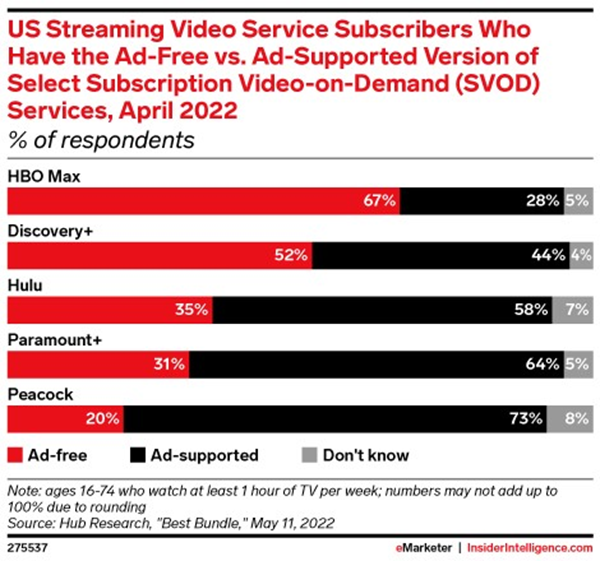When Netflix recorded its first ever quarterly decline in subscribers back in April 2022, analysts quickly declared that the SVOD distribution model had reached peak maturity and the future of OTT video distribution would be dominated by ad-driven models like AVOD and FAST.
However, SVOD services have typically delivered far greater revenue-per-user compared to other models, and technology companies are now commodifying SVOD capabilities, making it easier for media companies to offer their own services and distribute content directly to audiences.
These factors have media companies asking themselves: Should we focus on our own SVOD service to reach audiences directly or exclusively license our content through others’ Pay TV or OTT distribution channels?
In this blog, we’re taking a closer look at whether it makes sense for your media company to offer an SVOD service. We’ll highlight the benefits, key technical and strategic considerations, and alternatives in case an SVOD offering isn’t right for you.
Why offer an SVOD service?
 1) Full control of content promotion
1) Full control of content promotion
When you license your video content to other distributors, those platforms end up controlling how that content will be promoted. If the distributor is focused on other content (including their own), your content will not reach its full revenue potential.
Monetizing your video content by offering your own SVOD offering gives you full control over how your content is promoted and distributed. You can decide where and how each content asset is promoted, both on your service and out in the world.
2) Directly engage with your target audience
Having your own SVOD offering gives you direct access to engage with your targeted audience in a variety of ways. You can use this access to better understand your audience and uncover new ways to monetize through merchandise sales, exclusive/early releases, special events, and community activities. You can also sell access to your audience via advertising sales.
3) Complete access to OTT streaming data
OTT streaming platforms collect huge amounts of data to understand how audiences are engaging with video content on their platforms. Content providers can negotiate to get this data, but distributors don’t always share detailed platform metrics.
Offering your own SVOD streaming service means you have full access to collect data on content performance, audience engagement and preferences, and revenue as users interact with your content. This data can be aggregated and analyzed to optimize content production and acquisition strategies and drive customer satisfaction.
For more info on obtaining OTT data, read our blog post “Demystifying Data Access: Strategies to Obtain the FAST Platform Data You Need.”
4) Increased revenue per user
While ad-supported content distribution models like FAST and AVOD make video content accessible for a wider audience, SVOD distribution grants exclusive access to content for paying subscribers. SVOD platforms reach a smaller audience but generate higher average revenue per user (ARPU) than AVOD, FAST, or TVOD platforms.
8 Key considerations when offering an SVOD service
1) Is your content niche?
Early movers in SVOD like Netflix and Hulu worked aggressively to license content for every audience demographic. This helped accelerate customer acquisition on those platforms and pull viewers away from traditional Pay TV and movie rentals.
There won’t be another Netflix, but there’s still a good opportunity in SVOD for content providers who can cater to niche audiences whose interests are under-represented on mainstream platforms.
2) Is your content exclusive?
If you’re planning to offer SVOD, you’ll likely want your most valuable content to be available exclusively on your service. This can be problematic if you have content licensing deals with other subscription-based distributors, or if your content is available to stream for free on AVOD or FAST platforms.
3) How will you keep providing content?
To maximize audience engagement, you’ll need to keep releasing new content via your SVOD service. That means you’ll need either a large library of existing video assets to rotate or the ability to acquire/produce more. It is vital to plan what content will be released on the service and how it will be promoted to win new subscribers.
4) How well do you understand your target audience?
You’ll want to understand the answers to questions like:
- What kind of content (genre, length, etc.) do they like?
- What devices do they use to watch content?
- How is your target demographic currently accessing your content or similar content?
- What are the demographics of your target audience?
- Where do they live?
- How large is your target audience?
- What hobbies or interests do they share?
When you offer SVOD, you need the right content, promotion, and marketing strategies to transform your target audience into paying subscribers. The more you understand your audience, the better you’ll be able to market your SVOD service and start generating revenue.
5) Is your team ready for SVOD operations?
Does your organization have the necessary technical, personnel, and financial resources to operate an SVOD platform?
The very first SVOD services were launched by innovative companies using proprietary technology, while today’s platforms can be launched using third-party SaaS solutions. This change significantly decreases the technical expertise required, but you will need human resources dedicated to managing your website, acquiring/creating content for the platform, marketing, and data analytics.
6) Choosing an SVOD technology partner
If you’re planning to offer your SVOD service with help from external technology partners, what is that going to look like? Will you go with a SaaS vendor whose SVOD platform technology and apps are ready to use, or will you hire a software development company to build a solution from scratch and run it?
Either way, you’ll need to perform your due diligence when it comes to choosing an SVOD technology partner. You’ll want to choose a partner who can:
- Provide consistent uptime and support
- Deliver a fully-featured SVOD experience with a website player and apps for multiple user devices
- Offer a variety of monetization options with payment support
- Offer competitive pricing or revenue sharing terms
7) Planning for advertisements
In the earlier days of OTT streaming, there was a clear split between SVOD and ad-funded video streaming platforms. Today, most subscription-based video platforms offer an ad-funded service tier where subscribers can pay a lower subscription fee and view some advertisements as part of their video experience.

Many leading SVOD services now offer an ad-supported service tier, attracting subscribers who are willing to view some ads in exchange for a lower subscription fee. (Source)
Adding advertising to your platform is a great way to generate revenue while making the service less expensive for some viewers, but it can also add more complexity and resource demands on the operations side (unless you’re deploying on an SVOD technology platform that already supports advertising).
8) Preparing for subscriber acquisition
As you prepare to offer your SVOD offering, you’ll need a solid plan for acquiring new subscribers in the most cost-effective way possible to start recouping your investment. As part of that plan, you’ll want to understand how to reach your target audience with advertising that highlights your new service and the high-value content you have to offer.
Content distribution alternatives to SVOD
If you’re not ready to offer an SVOD service just yet, there are still plenty of ways to monetize your video content effectively.
You can license your content to traditional linear MVPDs, vMVPDs, or on other SVOD or AVOD platforms. You can also sell access to your content in a transactional model, either on your own website or through large TVOD platforms like Amazon Prime Video and YouTube. You can try to make an exclusive deal with one distributor to get the best revenue terms, or work with multiple distributors to see which one is the best fit for your content.
Our advice
Offering your own SVOD service comes with significant up-front costs and ongoing resources but can deliver considerable, steady revenue. If you can have a strong supply of exclusive content that’s in high demand with an eager, targeted audience, offering SVOD could be the right decision for you.
However, even if you offer an SVOD service, you should still license some content to traditional linear and OTT distributors. One of the best ways to reach potential subscribers is by providing a sample. When users discover your content on a FAST platform or another AVOD service, a portion of them will seek out your service and may become subscribers.
Optimize your content licensing revenue with Revedia
However you choose to monetize, Revedia makes it easy to manage and optimize your revenue and content data.
Our powerful platform helps you aggregate and normalize your content data, gain valuable insights into content performance and revenue, and optimize your content acquisition, promotion, and distribution strategies.
Leading media companies use Revedia to quickly answer questions like
- How much revenue is my content generating?
- Which content assets are performing best?
- Which content genres are generating the most revenue?
- Which distributors are the most important in my revenue mix?
- Is the incoming revenue and data compliant with licensing terms?
Ready to learn more?
View our free on-demand webinar Intro to Revedia Digital to see how Revedia can help you ingest and analyze data from OTT distributors.


